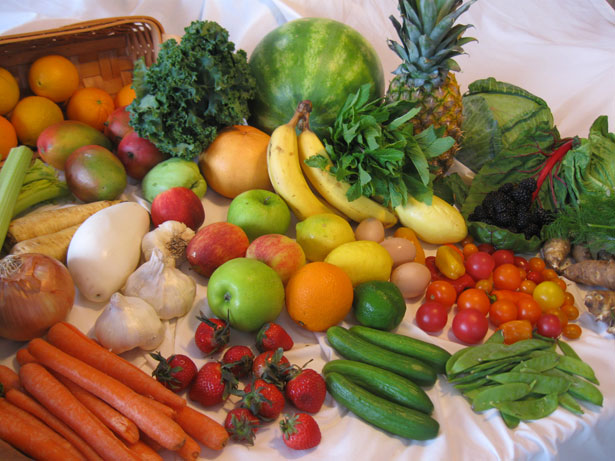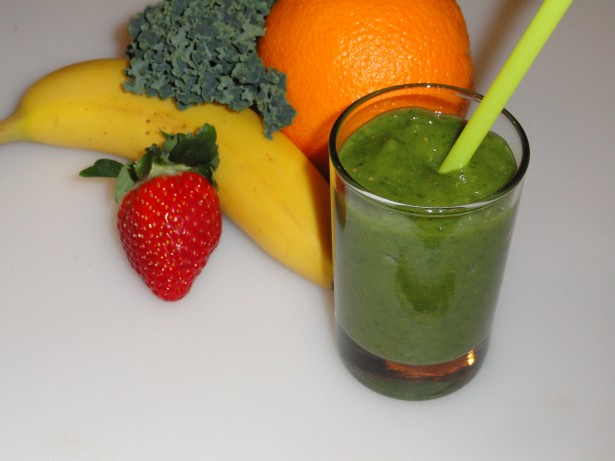Raw Food Diet
A raw food diet is one of the quickest ways to reach your health goals whether it be weight loss, body cleansing or a change to a more holistic nutrition lifestyle.

Raw foods are an important part of holistic nutrition and can provide the same essential vitamins and minerals that any cooked food can, including meats, and chances are it will be more easily absorbed into your body, or bio-available. Many use raw foods as part of a body cleanse or to help their bodies heal.
One problem often encountered with a raw food diet is a lack of necessary nutrients required for optimal health. There are ways to avoid this and get the nutrition you need by following some simple guidelines and knowing what foods to fill up on.
While
taking many forms, the basic raw food diet is centered around whole,
organic fruits and vegetables. Also eating are nuts, seeds, herbs
and even whole grains. For the most part, the food is raw, but may
be dehydrated, processed in a food processor or Vitablend and can
contain a variety of dishes from mock pasta to pizzas and burritos.
Some people choose to eat raw dairy products or raw fish, while
others may choose to eat 80% raw foods and 20% cooked foods. It is
all a matter of preference and comes easier with practice. For
example, you may decide to start with a 50/50 (50% cooked and 50%
raw) and increase your raw intake from there; .
Foods that
are avoided are processed, microwaved, irradiated, non-organic and
genetically modified foods. Also not eaten are foods that contain
refined sugar and flour, pasta, baked goods, and store bought juices.
This is because often drinks are also “raw” such as in no
coffees or teas, with fruit and vegetable juices dominating to ensure
an abundance of nutrition. Keep in mind if choose to eat 80% raw,
you will more than likely lose your “taste” for junk foods and
those that are highly processed as your taste buds become more
sensitive to the high sodium content and other unnatural food
additions (which actually may work in your favor to help you stay on
track).
Juicing is often the center of many health programs, and is a staple of a raw food diet for many. You can drink more juice in one day than many people eat in a week, giving you an abundant supply of enzymes, vitamins, minerals and other phytonutrients that can help your body regenerate fresh, new cells, provide an abundance of energy and may even help your body heal by filling in long-term nutritional gaps.
Basics of a Raw Food Diet
If
you have digestive issues, the nutrients from juice can often be more
easily assimilated than the nutrients from raw vegetables because the
fiber and pulp are removed. Reading books such as Raw
Vegetable and Fruit Juices by Norman Walker
can help you choose which kind of juice to include in your daily
diet. Be sure to make veggies the core of your juicing (as opposed
to fruits) and rotate your veggies every few days to avoid becoming
overly sensitive to any one type.
Investing
in a high quality juicer helps you extract more juice than a cheaper
model. For example, a $1000 juicer will yield more juice as a $200
juicer, which will yield more juice than an $80 juicer. There are
other benefits to the high end juicers, but don't wait until you have
the money for a top end model. Purchase what you can afford and start
juicing to take advantage of the health benefits right away. A good
first juicer is the Champion, which is centrifugal juicer and falls
into the mid-price range.

Smoothies are similar to juicing but leave the pulp and fiber in tact. This means a thicker drink that will leave you feeling fuller than vegetable juice will. Because of this, many use smoothies as a healthy meal replacement in a raw food diet, while others use it as a delicious addition to their raw meal. Some healthy raw additions may be chia seeds, dates, almond and other nut milks among other things. But watch out, as often if you have a smoothie made for you (like in a restaurant), you may be getting yogurt, ice cream or other ingredients that are not raw.
Salads are
a staple of the raw food diet, therefore raw foodies tend to get very
creative with them. Keep
your raw food diet interesting by using a variety of flavors and
colors. Start with a pile of leafy greens, knowing that there are
more than a couple kinds of lettuce. You can use romaine, arugula,
spinach, baby spinach, butter lettuce, green leaf lettuce, a
spring-mix and so on. Finely chop broccoli, cauliflower, or jicima.
Try shredding carrots, cucumber or radishes for a topping.
Salad
dressings can be just as creative or use the basics. Lemon juice,
olive oil, flax oil and raw apple cider vinegar can be mixed and
matched with your favorite herbs for a basic and quick dressing.
Here are a couple other ideas;
Salad
Dressings
Asian Flare; Press or juice a piece of ginger. Add a spoon of this juice to 1 cup of fresh pineapple juice and sesame oil. This will last in your fridge in a glass container for about three days. Use over a salad made of fresh, shredded red and green cabbage, shredded carrots, romaine lettuce leaves and raisins.
Sweet and
Sour; Blend together 1-2 pitted dates, ½ cucumber, juice from ½
lemon and pour over fresh, green salad.
Avocado
Lime Dressing; Blend together 1 peeled avocado, ½ cup extra virgin
olive oil, splash of lime juice, slash of orange juice, 1 chopped
green onion, handful of fresh cilantro, sea salt & pepper.
Service over a fresh, green salad made from your choice of dark
greens (spinach, kale, etc.) mixed with chopped iceberg lettuce.
Grains,
Nuts and Seeds
Nuts, seeds, sprouts, beans and lentils are used to top salads, make dehydrated breads, chips and loaves. They are hearty enough for cold days and often serve as a source of protein. They are also delicious to make nut burgers, veggie burgers, hummus and wraps. To make the loaves and burgers, you can dehydrate them, leave them completely raw or compromise and cook in an oven at 150 degrees, but higher than this temperature is said to destroy enzymes.
When using seeds, nuts or grains, soak them beforehand. This increases the nutrient value up to 400 times. If you are going to use these for a recipe for soups, dressings or seed loaves, you must soak them first to help soften and eliminate nutritional inhibitors and toxins. Generally soak your seeds or nuts in twice the amount of water that you have of the products. (Ex: 1 cup seed to 2 cups water) Soak the allotted time then rinse and store in the refrigerator. I like to rinse my water every 2 or 3 hours while soaking.
Soak Times;
Almonds, cashews, sunflower, sesame and flax seeds soak 8-12 hours
Pumpkin seeds and pine nuts soak 20 minutes to 4 hours
Sprouting is an important part of a raw food diet for the nutrient value. Sprouts are considered to be the perfect food by many health food advocates, as they are full of nutrition and packed with highly bio-available plant protein. Many types of sprouts can be found in the produce section of your local market, including alfalfa, radish and clover. For a cost effective and convenient option, many people prefer to sprout their own seeds, grains and nuts in jars.
How to Sprout At Home
Use quart or gallon size glass jars for sprouting. Start by putting the seed or grain in your jar to soak in water. Drain and rinse regularly until the sprout reaches the ideal length, which could take 1-5 days, depending upon the sprout used. Then slow the growth by refrigerating. Afterwards use your sprouts away or the jar may be covered and placed in your refrigerator for a short time until you are ready to use them.
Some grains such as barley and buckwheat can be soil grown in nursery flats for their fresh baby grass or sprouted in a jar for extra nutrition to be used in recipes. These can be started in water as above and then moved into soil as soon as you see the green so that you can grow the grass.
Dehydrating
is a way to enjoy raw food version of your favorite cooked foods.
Corn chips, crackers, breads and veggie burger recipes abound to make
and then dehydrate. It is a long process, however, and can take
anywhere from a few hours to a few days. This is where practice and
planning come in handy as you have to decide that you want a veggie
burger, “bread” or chips well in advance.
Not everyone can go straight into a raw food diet. Some have to “wean” off of meat and other foods they are used to or the cleansing side effects may be too harsh. Using a body cleanse or colon cleanse program may help you avoid the harsher side effects as you help your body remove years of toxic buildup that can occur over a lifetime.




